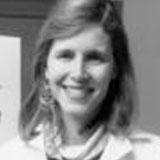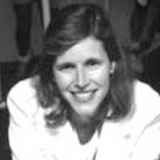Biography: Dr. JoAnn Elisabeth Manson

Year: 1999
Achievement: Dr. Manson was the first woman to be chief of preventive medicine at Brigham and Women’s Hospital, Harvard Medical School.
Year: 1999
Achievement: Dr. Manson received Brigham and Women’s Hospital’s first annual Mary Horrigan Connors Award for "outstanding leadership in women’s health."
Joann Manson was influenced by her high school chemistry teacher, a woman who supported the idea of women pursuing a career in medicine.
Dr. JoAnn Manson has been a leading researcher in the two largest women's health research projects ever launched in the United States—the first large scale study of women begun in 1976 as the Harvard Nurses' Health Study, and the National Institute of Health's Women's Health Initiative, which involved 164,000 healthy women. Until the early 1990s, research on human health was usually done from all-male subject groups, and the results generated were thought to apply to both sexes. Federal regulation now mandates the inclusion of women in all research studies, as men and women may react differently to certain diseases and drug remedies, a fact Dr. Manson's research efforts have helped to establish.
JoAnn Elisabeth Manson was in 1953, in Cleveland, Ohio. She comes from a strong scientific background; her mother was a medical social worker and her father worked as an engineer for the National Aeronautics and Space Administration. Her high-school chemistry teacher encouraged her to train in the sciences, yet her school friends knew her artistic side best, particularly her painting, sculpture, and musical talents playing the harp.
She was able to develop all her interests at Harvard University, reviewing dance and theater for the Harvard Independent while studying pre-med. Her well-rounded approach to life and to work has earned her the respect of colleagues and patients alike.
Dr. Manson is best known to the public for her sensible advice on healthy living, which stems from her research on women and heart disease. With co-author Patricia Amend, she published The 30-Minute Fitness Solution: A Four-Step Plan for Women of All Ages, which explains her key idea of the preventative health benefits of gentle exercise. She has long been advising her patients to take up small lifestyle changes for long term health benefits, recognizing that no-cost activities like brisk walking can be a simple way of improving the health of women of all backgrounds and fitness levels. She often uses her prescription pad to write up an exercise regime for a patient instead of a course of pills.
Patients applaud her "bedside manner." Her medical practice serves 400 patients, yet she takes time to tailor her care to fit in with individual schedules and interests. Such attention to the individual, not simply the medical problem, has been honored by Boston Magazine who listed her as one of their "Top Docs for Women" in 2001
Dr. Manson's colleagues also credit her ability to deal with "difficult personalities" and competitive environments. Such qualities serve her well at work—in 1999 she was appointed full professor at Harvard Medical School, where women hold only 9 percent of faculty professorships.
Not withstanding her own professional achievements, Dr. Manson is still well aware of the gender disparities in academic medicine. As she commented in The Houston Chronicle, "[w]omen are still confronting barriers to their success. The glass ceiling may have some cracks in it, but it hasn't yet come crashing down." Dr. Manson is playing her own part in making a change by participating in mentoring programs and giving young practitioners extensive guidance and support. She is extremely proud of the students she has helped, and lists their professional achievements in her C.V.
In 1997, along with Oprah Winfrey and former First Lady Betty Ford, she was honored by American Health for Women magazine at a ceremony for their "Ten Heroes in Women's Health." Ladies Home Journal named her one of their top ten "Champions of Women's Health" in 2000.
As well as her numerous roles as researcher, physician, teacher, and writer, Dr. Manson is a mother. She and her husband, Christopher Ames, try to balance work and family life with their two children.

Dr. Joann Elisabeth Manson
Dr. Joann Elisabeth Manson
When I was in medical school in the late 1970s, it was very common to use the male model for teaching. For instance, there was the classical '70 kilogram man,' and you know, the doses of drugs that would be used for a male of that body size, and also the risk factors for diseases, and the treatment of various diseases in males. The Nurses' Health Study was started in 1976, with 121 thousand female registered nurses. It was really the first large-scale observational study of women, looking at risk factors for many chronic diseases-breast cancer, colon cancer, heart disease, diabetes, and previously, most of these studies had been in men. I feel very strongly that there needs to be more of an emphasis on prevention and health promotion than there's been in the past. The paradigm has been treatment of disease, more so than prevention. And there is increasing evidence that lifestyle factors play an enormous role in prevention of disease. I've often said that regular physical activity is as close to a magic bullet for good health as we've come in modern medicine, despite all the technological advances. The list of conditions that can be prevented or at least improved through regular exercise is really an expansive one. You're talking about reduced risk of diabetes, heart disease, stroke, obesity, several forms of cancer-particular colon cancer and breast cancer, osteoporosis, and many others. And the portfolio is enormous. Our understanding of the benefits of exercise also has evolved over the years. We used to believe that vigorous and prolonged exercise was necessary in order to improve health. That you needed to get your heart rate at least 70 to 80 percent maximum, you needed to do the exercise continuously, at least 20 minutes, 3 times a week, and it had to be quite vigorous. We now know that even moderate intensity exercise, such as brisk walking-and it can be broken up into maybe 15 minutes or even 10 minutes at a time-can have important health benefits including the prevention of heart disease, and stroke, and diabetes, and various forms of cancer, and osteoporotic fractures. So I think we're learning more and more about the benefits of moderate exercise-which is good news from a public health standpoint. Because many people will not engage in vigorous exercise. And setting the bar too high, can serve as a deterrent of getting started.






